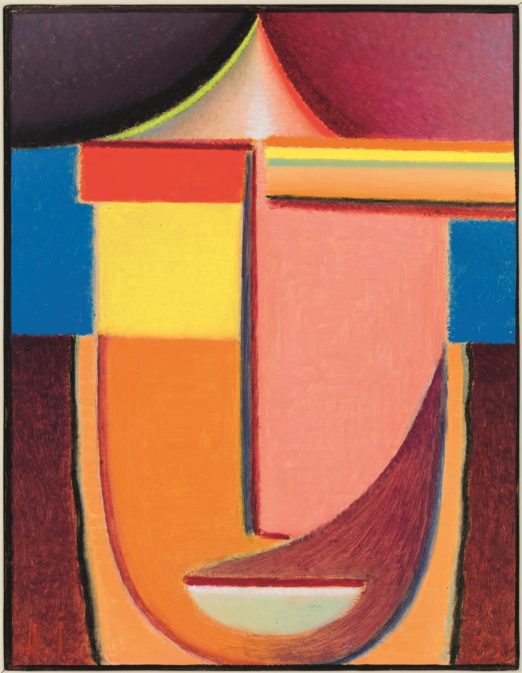Alexej Jawlensky (1864-1941): The promise of the face
6 November 2021 — 6 February 2022
Alexej von Jawlensky, a Russian painter born in 1864, was a travelling companion of Kandinsky during the first decade of the 20th century in Munich. He is a perfect example of an artist that played his part in modernity by blurring the lines between expressionism and fauvism, between the figurative and the abstract.
Alexej von Jawlensky spent the majority of his artistic career in Germany. After arriving in Munich (1896), Jawlensky assimilated all the tenets of the avant-garde at lighting speed (impressionism, Van Gogh, Cézanne). However, he quickly developed his personal synthesis between fauvism and expressionism, revealing his exceptional talent as a colourist. In 1909, Jawlensky founded, with his friend Kandinsky, an artistic group that played a fundamental role in the history of modernity, The New Association. He later exhibited with the Blaue Reiter. Although, the artist initially focused on still lifes and landscapes, he quickly moved on to the subject which would haunt all his work – the face. During his initial period – Pre-War Heads – the faces were relatively individual and characterised by impressively strong colours.
In 1914, war forced Jawlensky to take refuge in Switzerland. He then began to employ a technique that he would apply almost exclusively: the series. The first, Variations, was based on a landscape seen through a window. The Path (1914) takes the random colours from abstract art and its refusal of an illusionistic space, while keeping traces of the initial subject.
Starting in 1917, for twenty years, Jawlensky would focus almost exclusively on the face. With Mystical Heads and Saviour’s Faces 1917/1923, Geometric Heads 1924/1933 and Meditations, 1933/1937, he gradually abandoned any ‘natural’ resemblance and developed a stylised form, almost an icon.
The omnipresence of this subject, both familiar and mysterious, is inspired by the desire to bestow a religious dimension on his works. “I painted these variations for some years and then I found it necessary to find form for the face, because I had come to understand that great art can only be painted with religious feeling,” Jawlensky explained.
Subsequently, the face grew until it occupied almost the entire surface of the painting. The geometric process is completed and the limited choice of colours accentuates the combination of the forms. By contrast, in his finale series, Meditations, the painter, suffering from arthritis and sometimes obliged to fasten the brush to his wrists, painted through gestures, blurring the features. Though small in size, these final works, where the face is gradually transformed into the intersection of the line of the eyebrows and that of the nose in the form of a cross, are staggeringly expressive. The uniqueness of Jawlensky in 20th-century art lies in his invention of an astonishing form, that of the abstract face.
Scientific Committee: Itzhak Golderg
General Committee: Bruno Gaudichon
Catalogue published for the exhibition by the publisher Éditions Gallimard. Prize: 29€
The design was made possible thanks to generous support from the Flanders Colours range of paints distributed by Tollens.



